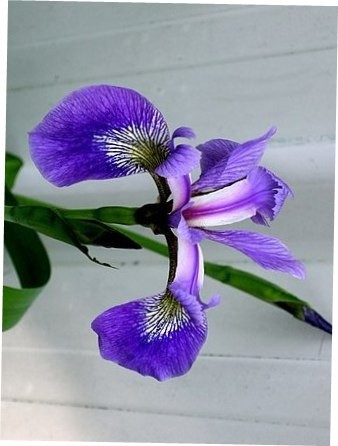Junggar Iris
(Iris songarica)

Description
Iris songarica is a beardless iris in the genus Iris, in the subgenus Limniris and in the series Tenuifoliae of the genus. It is a rhizomatous herbaceous perennial, from Central Asia, located in Afghanistan, Pakistan, Iran, Kazakhstan, Tajikistan, Turkmenistan and Uzbekistan. It has long strap-like leaves, a long stem and 2–3 flowers in shades of violet, dark blue, to lavender blue. Iris songarica flowers are similar in form to Iris spuria but differ in the colour shades. It has a slender, knobbly, dark rhizome. Under the rhizome, are filamentous (feeder) roots, that can grow to a depth of 1–1.5 m (3 ft 3 in – 4 ft 11 in) into the soils and extend outwards between 20–80 cm (8–31 in). On top of the rhizome, is the vestiges or remains of last seasons leaves, the maroon-brown fibres interweave, creating a spiral like effect. They also surround the base of the new leaves, as a sheath. It has rigid, strap-like, linear, greyish-green leaves, which are 15–23 cm (6–9 in) long and 2-3mm wide, (at flowering time). Afterwards, they then extend up to 70–80 cm (28–31 in) long and 7-10mm wide. It has a visible longitudinal vein. Iris songarica is a native to a wide region, of various temperate areas of Central Asia. Ranging from Iran (Persia) to Tibet. It is found in the western Asian countries of Afghanistan, Pakistan and Iran (including Gonabad). In the middle Asian countries of (the former Soviet Union republics of), it is found in Kazakhstan, Tajikistan, Turkmenistan and Uzbekistan. It is found within Turkestan, in the Kopet Dag mountain range. Also found in Mongolia, and northern China. It is found growing on clay desert steppes or desert positions, in sunny grasslands or dry meadows, on stony hillside and on grassy hillsides.
Taxonomic tree:







